
Holidays Treats: A Merry Risk Assessment
Christmas time is upon us once more! Lights are gleaming, candles are burning, and merriment is all around. A time to forgive and forget and let go, relax and enjoy a short respite from the daily hustle and bustle. That, however, doesn’t mean we should be less vigilant about the products we consume. On the contrary, since food takes such a central place in any kind of celebration, but particularly around the holidays, consumers are especially vulnerable during this time of year.
As consumption of confectionery and sweets skyrockets during this period, food companies need to be on high alert for any signs of contaminated products in order to avoid potential food safety incidents and safeguard public health. For this reason, we have selected three of the most widely consumed products during the holidays Sugar Cookies, Gingerbread and Eggnog to perform risk analysis and assessment highlighting the most critical risks and hazards associated with these products for the next few months.
What is the risk trend for our 3 Christmas Treats?
The foundation for any risk mitigation plan is understanding the risk of your products. For this reason, using FOODAKAI’s AI-powered food safety data and analytics platform we performed risk analysis of the Sugar Cookies, Gingerbread and Eggnog in order to have a clear view of their risk.
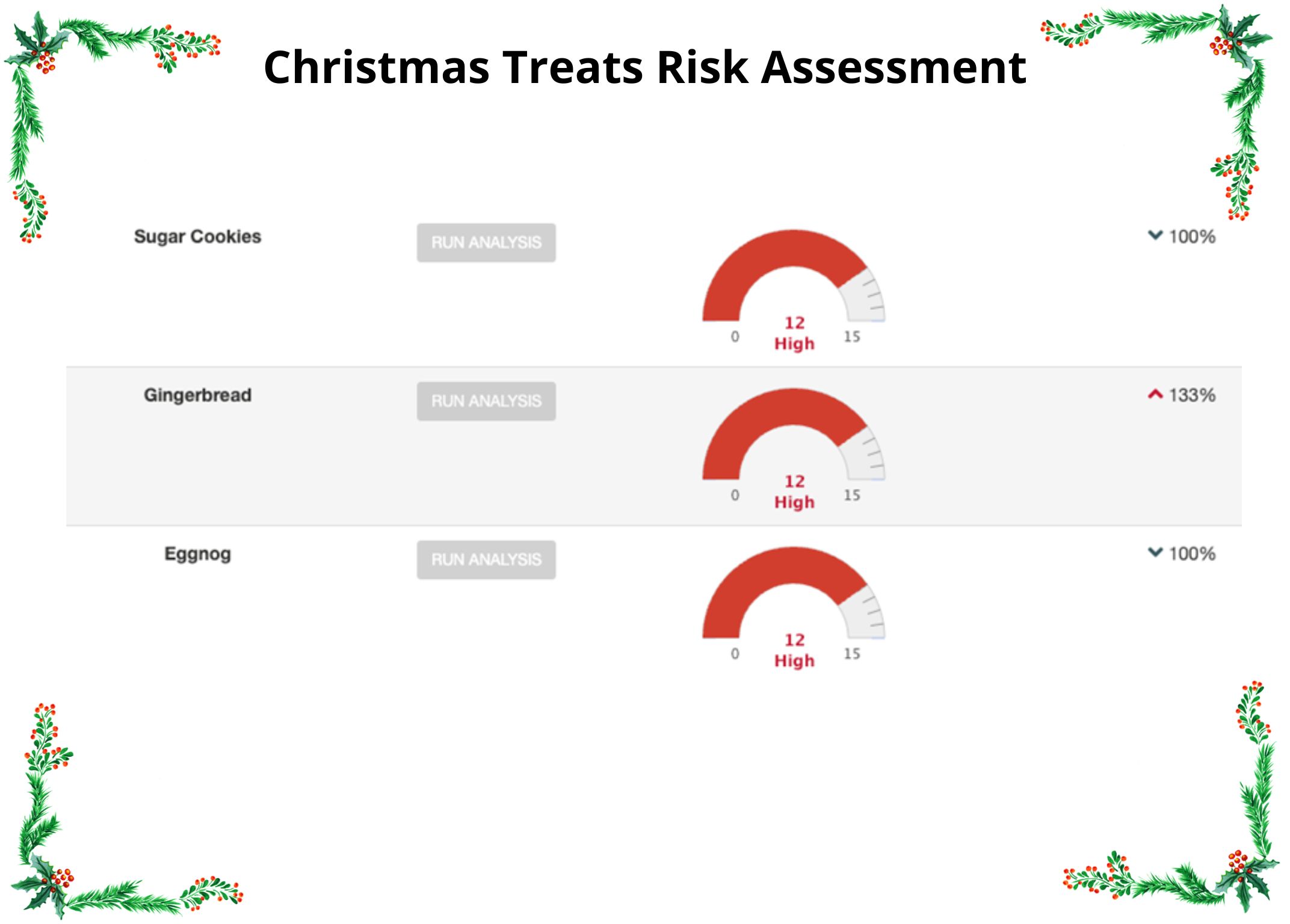
As highlighted above all three products are considered high risk with Gingerbread showing a 133% incident increase trend over the next year. The Sugar Cookies and Eggnog while they have identical risk score with Gingerbread they appear to have a slightly decreased incident risk trend for the foreseeable future.
To dig in deeper into the risk assessment of the three Christmas treats, it is vital to perform risk analysis and hazard analysis for each one of the ingredients used for their production as well as tap into forecasts for future incidents for the ingredients and hazards associated to the product. To do this, we utilized FOODAKAI’s to perform in-depth analysis of all involved ingredients as well as the hazards associated to them regarding the 3 finished products.
Important notes:
- The data for this article were extracted in November 2023.
- The ingredients for each Christmas treat were selected from standards recipes for their preparation.
Ingredients Risk Assessment of 3 Christmas Treats
Sugar Cookies
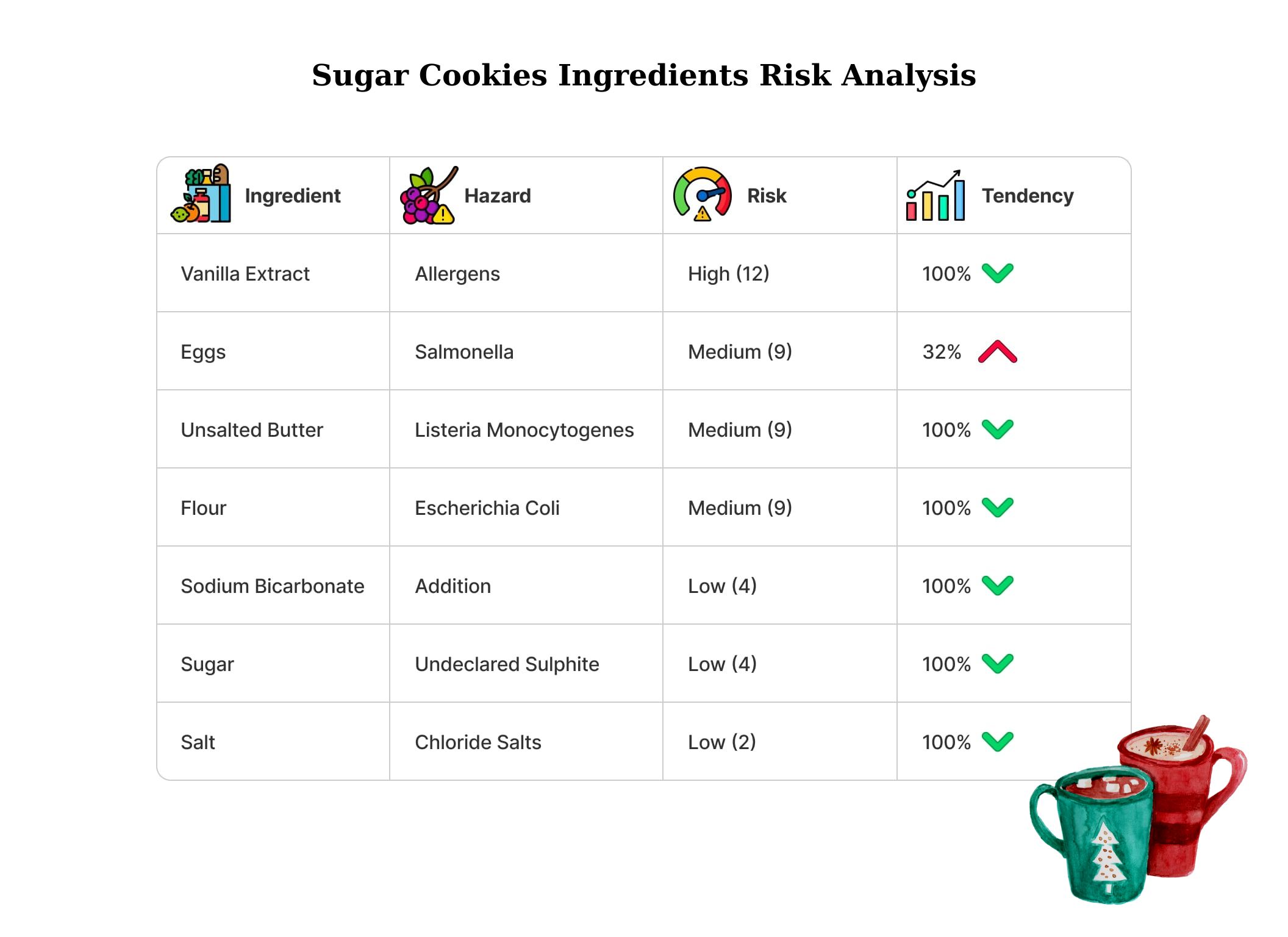
As can be seen above the risk level of the ingredients used to bake Christmas Sugar Cookies are ranked according to their risk level (high to low) with Vanilla Extract followed by Eggs in top and Sugar and Salt at the bottom of the table as the lower risk ingredients. Additionally, the most prominent hazard associated with the incidents recorded for each ingredient is illustrated, with Allergens (due to trace amounts of Almonds in Vanilla Extract) and Salmonella spp. being the primary hazards found in most food safety incidents for Vanilla Extract and Eggs respectively.
Furthermore, the incidents increase trend (tendency) for each of these ingredients is showcased. While Eggs are calculated with a medium risk score, a 32% rise in the number of incidents attributed to Salmonella spp. is expected in the next year. However, for the rest of the ingredients of the Sugar Cookies there’s an expected decrease in incidents.
To have an enhanced view of the products risk of Sugar Cookies, using FOODAKAI’s AI and Predictive analytics capabilities we selected to see forecasts for an ingredient that showed an increased number of incidents in the next months for a specific hazard: eggs.

In order to have a complete overview, we decided to look for the overall number of forecasted incidents for the selected ingredient for all types of hazards. Therefore, Iin the next 12 months approximately 44 incidents concerning eggs are expected, compared to 25 in the previous year, amounting to an estimated 76% forecasted increase. This relates to a forecasted upward trend in the number on incidents for the product, as shown below.
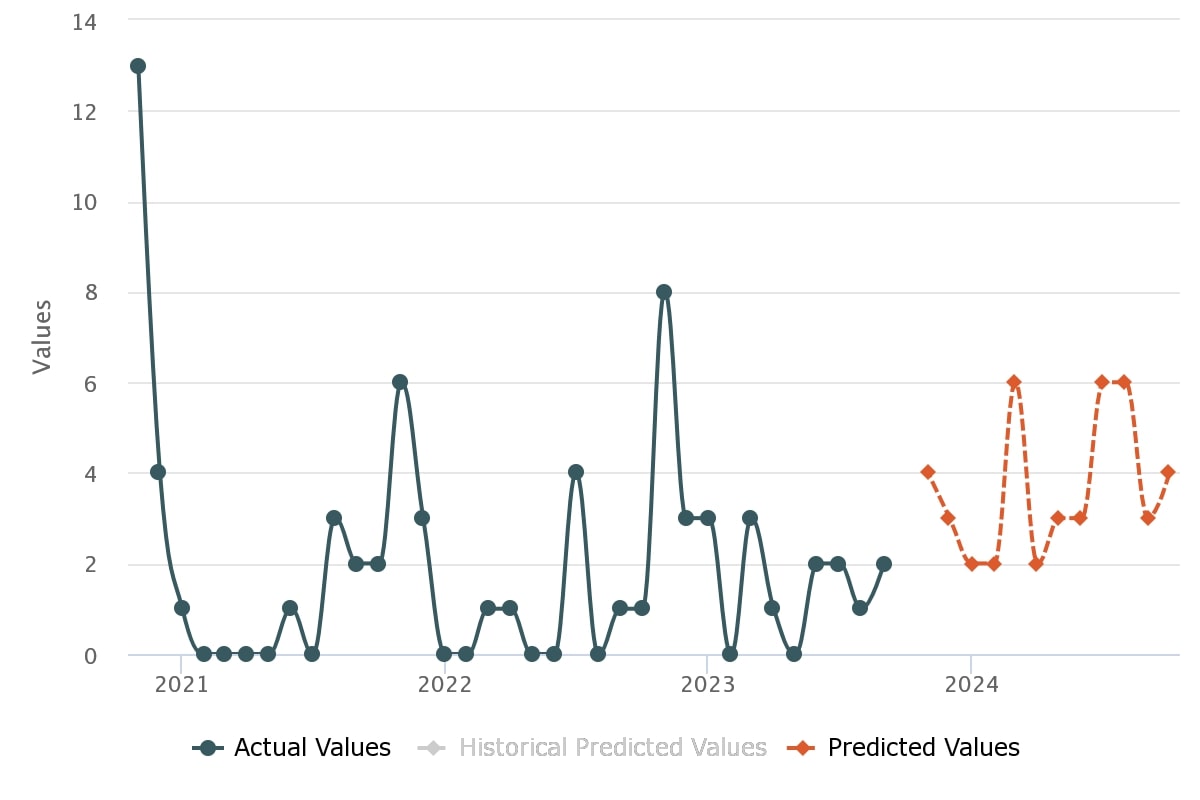
Gingerbread
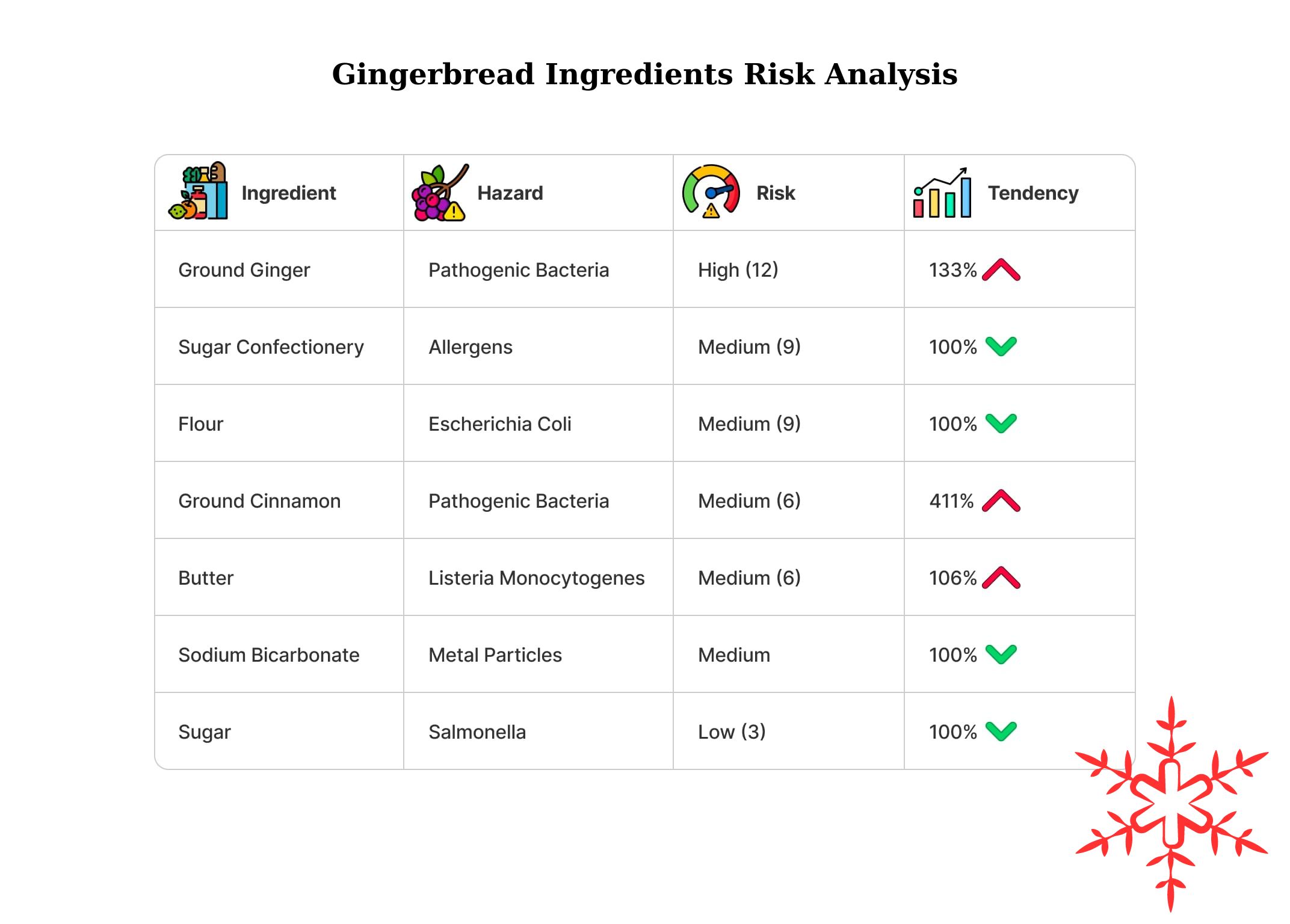
As with the Sugar Cookies, we performed risk assessment of all the ingredients used for the making of Gingerbread. All ingredients are listed according to their risk score from High to low with Ground Ginger taking first place as the ingredient with higher risk followed by Sugar Confectionary, and Sugar again ranked as the ingredient with the lowest risk. Pathogenic Bacteria are the most common hazard associated with food safety incidents for Ground Ginger, which are expected to increase in the next year by 133%.
It should also be noted that Ground Cinnamon and Butter which are currently scored as of Medium Risk are forecasted to have an increase of incidents in the coming months. More specifically, a massive 411% rise of the number of incidents associated with Pathogenic Bacteria is expected for Ground Cinamon, followed by an increase of 106% for Butter due to Listeria Monocytogenes.
This increase in the number of incidents expected for Ground Ginger, Ground Cinnamon and Butter is clearly illustrated in the overall trend for incidents rise in the next year for Gingerbread.
To go even further, this time we selected an ingredient that wasn’t at the top of the list as the one with higher risk, but which showed increasing trend for a specific hazard: butter.

As shown above, the overall number of incidents attributed to all hazards for butter is expected to have a slight decrease (8%) in the next 12 months from 24 in the last year to 22 in the next. This is also pictured in the graph below, where the slight downward trend for the next months is illustrated.
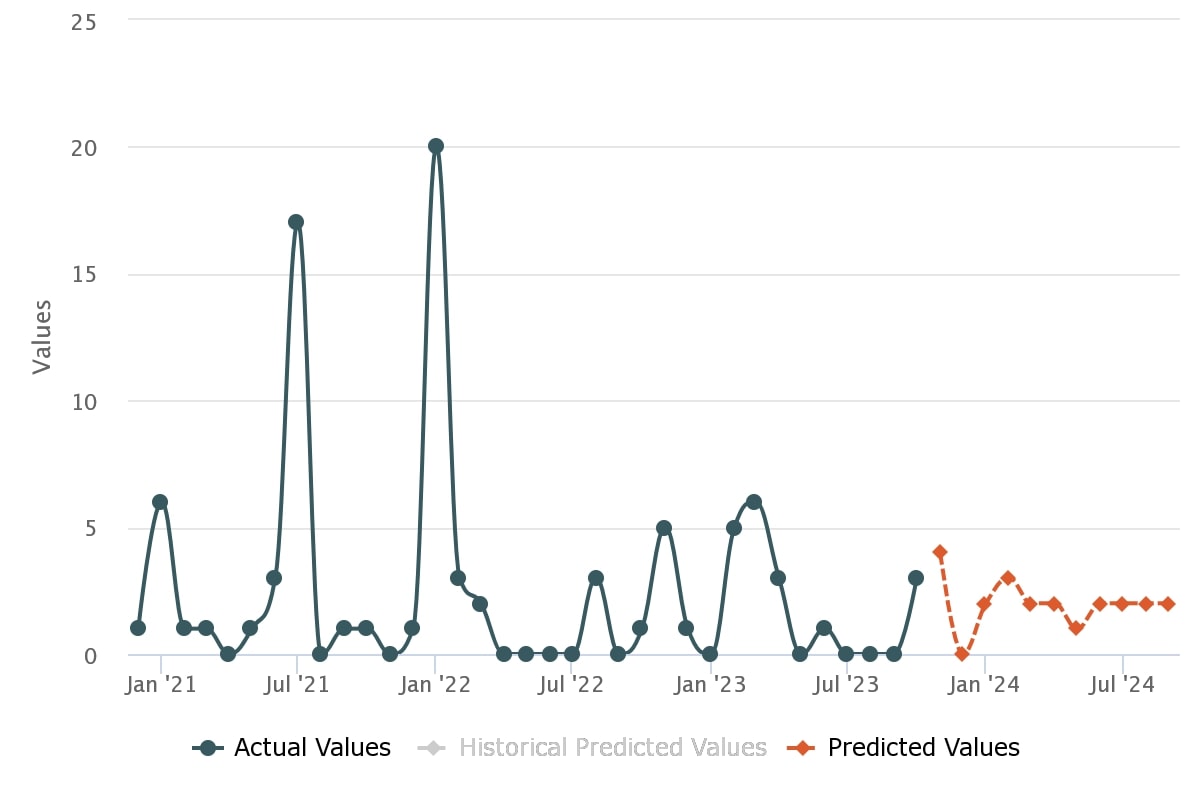
It is important to note here that while the overall number of incidents for butter that are attributed to all types of hazards is projected to slightly decrease (8%), the number of incidents associated with Listeria Monocytogenes is expected to rise (106%) as showcased in the Gingerbread Ingredients Risk Analysis Table above.
Eggnog
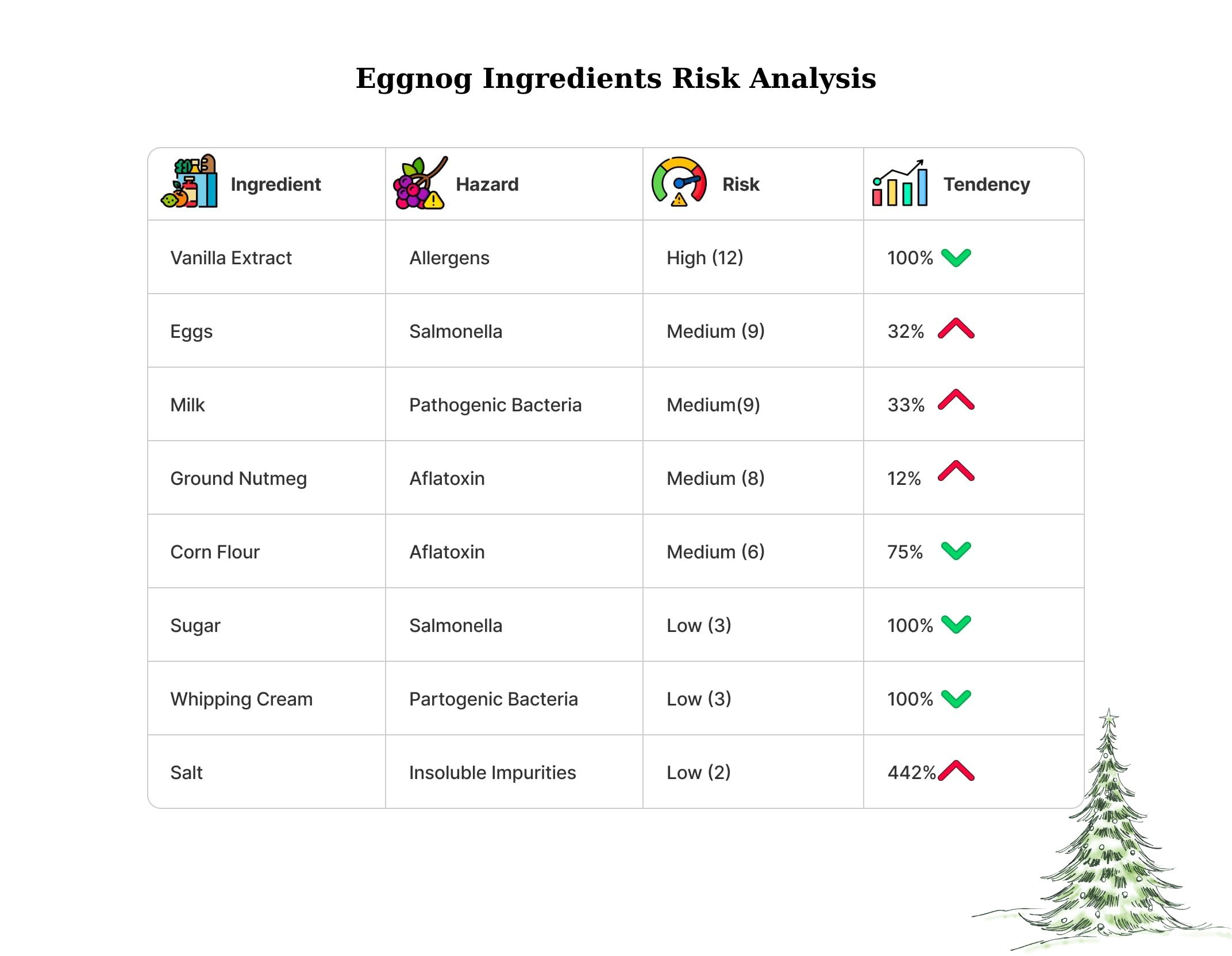
Finally, we performed risk assessment for the ingredients of Eggnog as well. For this Christmas treat we opted to select the non-alcoholic version as the type of alcohol included varies from recipe to recipe. As with the other products, the ingredients were ranked based on the risk score with Vanilla Extract taking the top placed owing to an increased number of incidents attributed to Allergens, which are again a result of (of Almonds in Vanilla Extract. At the bottom of the table sits Whipping Cream and Salt.
Four ingredients from the Eggnog recipe are expected to have an increase in their number of incidents for the next year. Namely, for Eggs and Milk a rise of 32% and 33% respectively is forecasted, due to increasing incidents for Salmonella spp. for the first ingredient and Pathogenic Bacteria for the second. Moreover, Ground Nutmeg is expected to have a slight increase with Aflatoxin as a main hazard compared to Salt where a sharp increase of 442% percent is expected attributed to Insoluble Impurities.
Note that while Salt is listed as an ingredient for both Sugar Cookies and Eggnog the incidents trend appears quite different. This is attributed to the combination of ingredients and hazard associated to them in each case. As milk is one of the most important of eggnog, one which shows an increasing trend for incidents regarding Pathogenic Bacteria, it was chosen in order to have an overview of the forecasts for the overall number of incidents for the next months.
As milk is one of the most important of eggnog, one which shows an increasing trend for incidents regarding Pathogenic Bacteria, it was chosen in order to have an overview of the forecasts for the overall number of incidents for the next months.

Incidents regarding milk are expected to increase in the next months by 23%, up to 112 from 91 in the past 12 months. This is clearly illustrated in the graph below which showcases the steady upward trend.
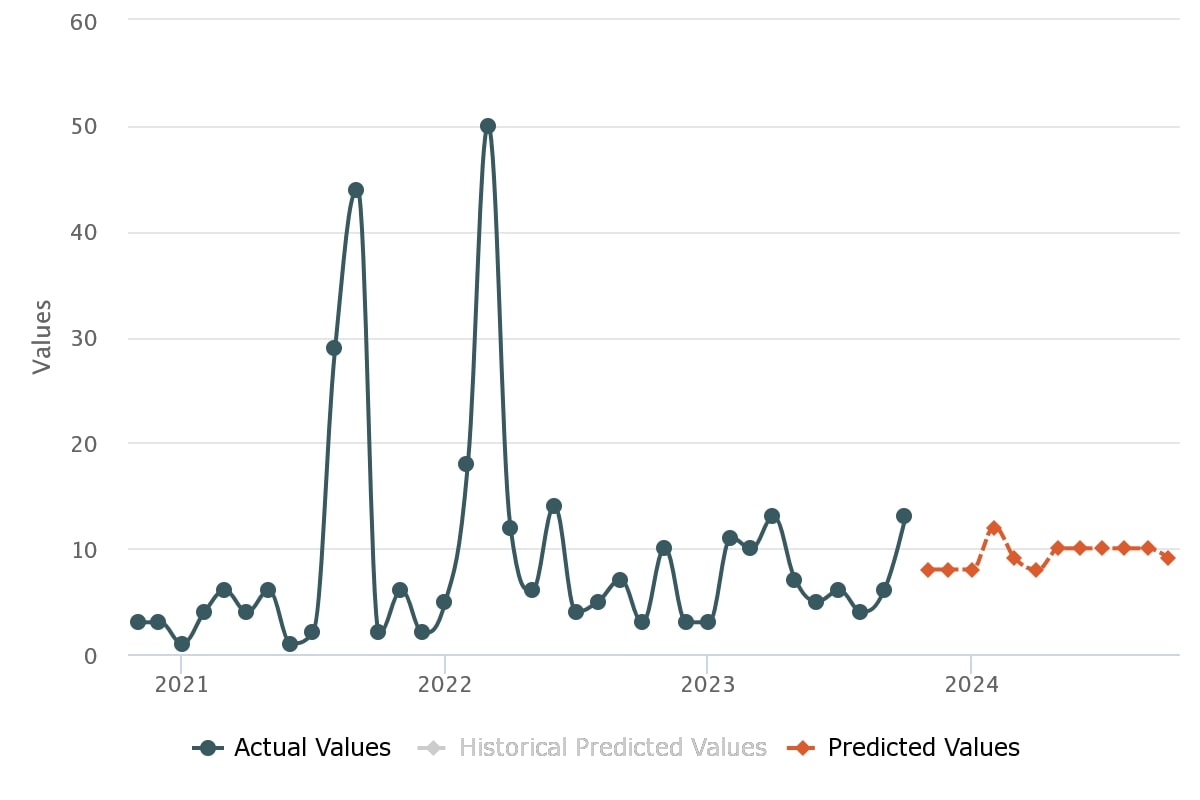
Christmas Treats Hazard Trend Forecasts
Since we have performed risk assessment of the 3 Christmas Treats and their ingredients, which included overall incidents trend forecasts for one main ingredient of each of their recipes, it’s time we focused on forecasts on some prominent hazards from the assessment above: Salmonella spp., Allergens and Listeria Monocytogenes.
For this reason and to have an expanded overview of we will be looking at the overall incident hazard trend forecasts for the three hazards across all possible ingredients.
Salmonella spp.

Incidents associated with Salmonella spp., a hazard that was found in all 3 Christmas Treats, are expected to increase in the next 12 months by 24%, with 1365 incidents compared to 1222 in the past 12 months. This is evidenced in the graph below which illustrates an upward trend for the next months.
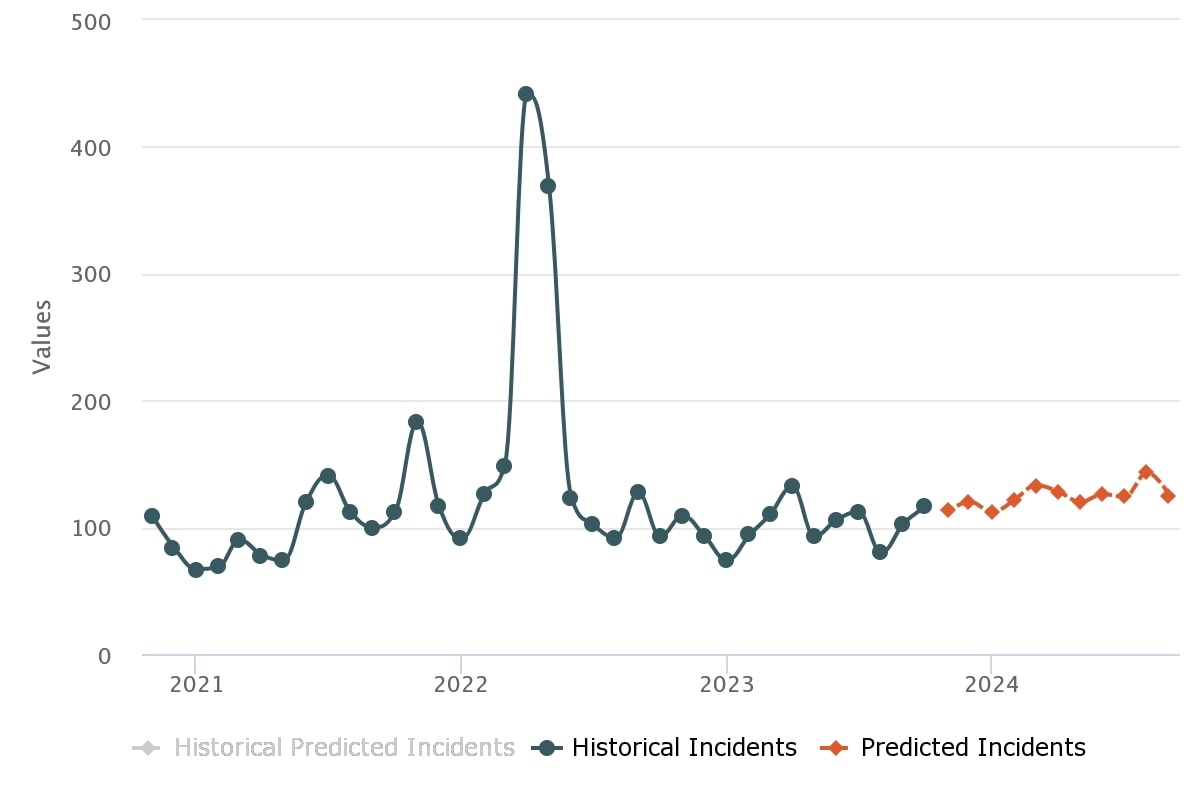
Allergens

Allergens, a result of trace amounts of Almonds in ingredients for the 3 Christmas Treats, were found across all 3. The overall number of incidents attributed to Allergens is expected to have a slight decrease (16%), from 2031 to 1709 in the next 12 months, which is also highlighted in the downward trend chart below.
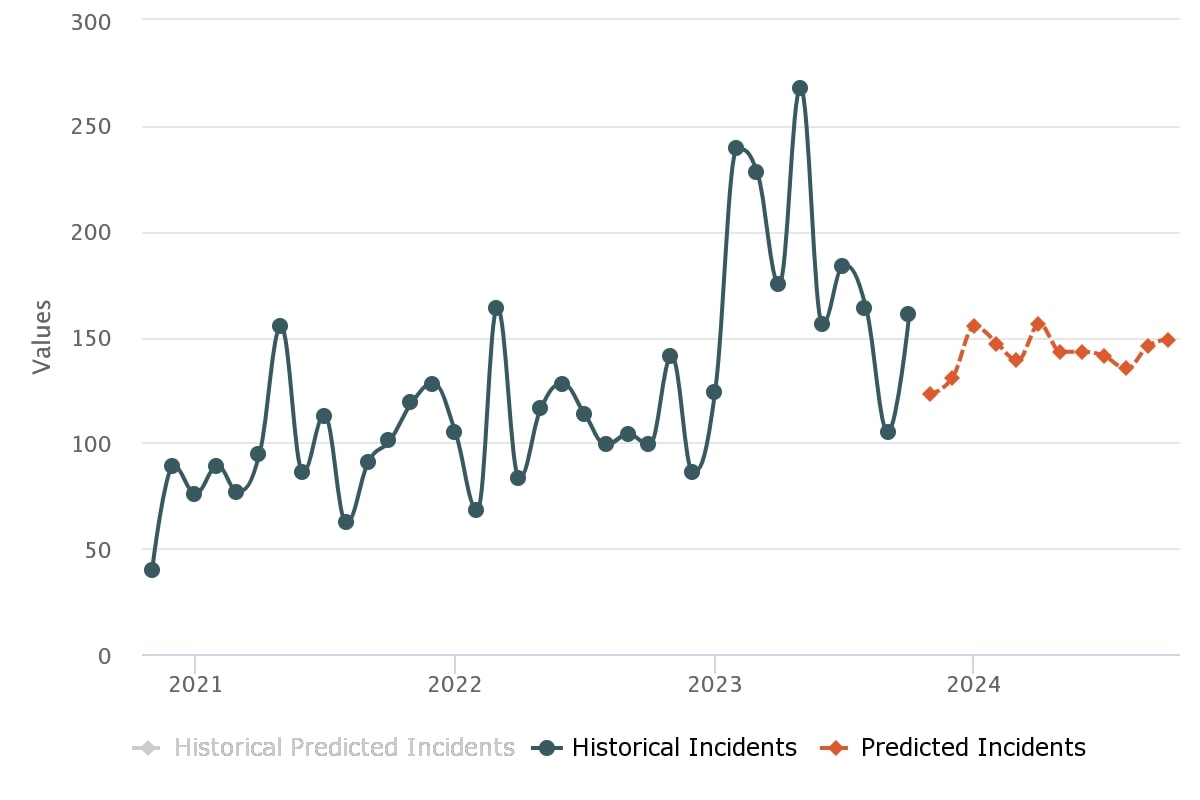
Listeria Monocytogenes

Found in Sugar Cookies and Gingerbread, overall Listeria Monocytogenes incidents are on the decrease for the next 12 months to 874 from 1320 last year by 27%. The downward trend can be seen on the graph below in comparison to the previous years.
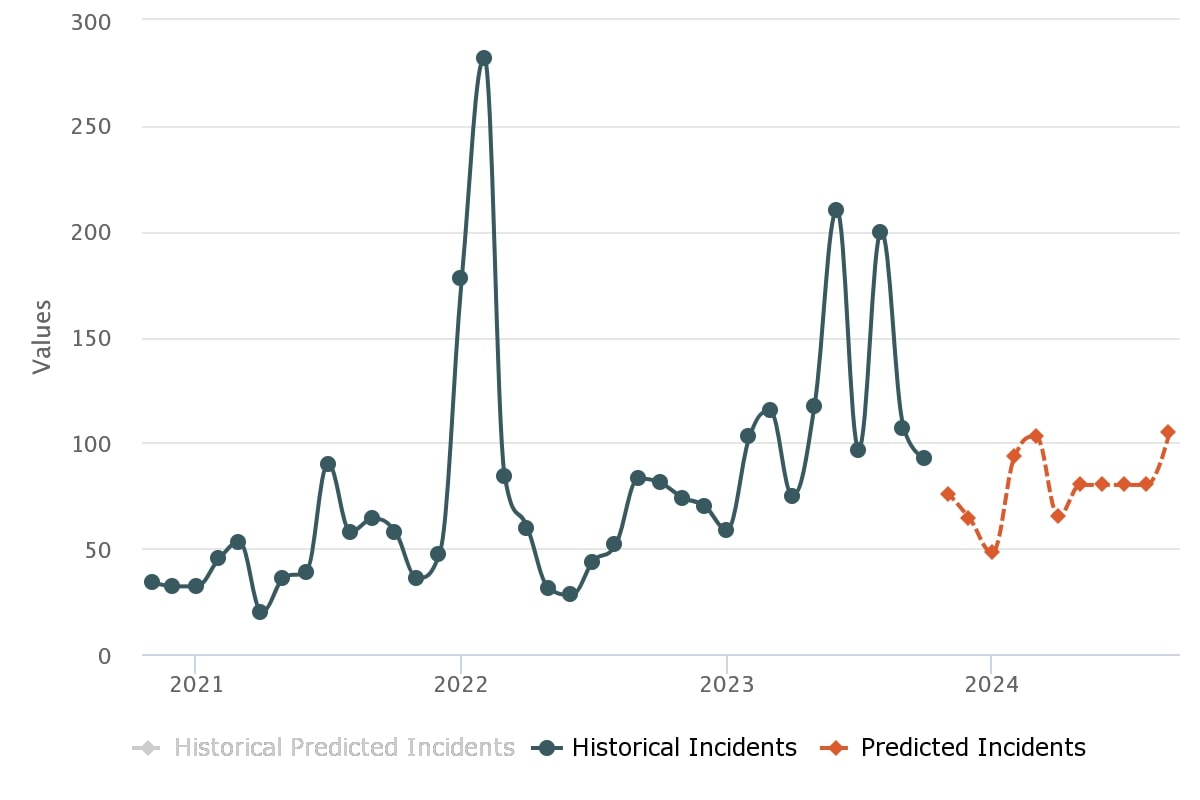
What this Christmas Treats risk assessment analysis indicated is that ensuring the food safety raw materials and ingredients is complex process that requires that food companies have a total and enhanced view all current and emerging risks to the key ingredients for their products. With a complete overview of all potential risks to their supply chain, food companies can decide on corrective measures, formulate a comprehensive risk mitigation plan and avoid food safety incidents.
To know more about how FOODAKAI can help you drastically improve your threat landscape overview through actionable ingredients and hazard forecasts on your key products, begin with a pilot.
Book a call with us today!
For now, Happy Holidays & and Happy New Year!









